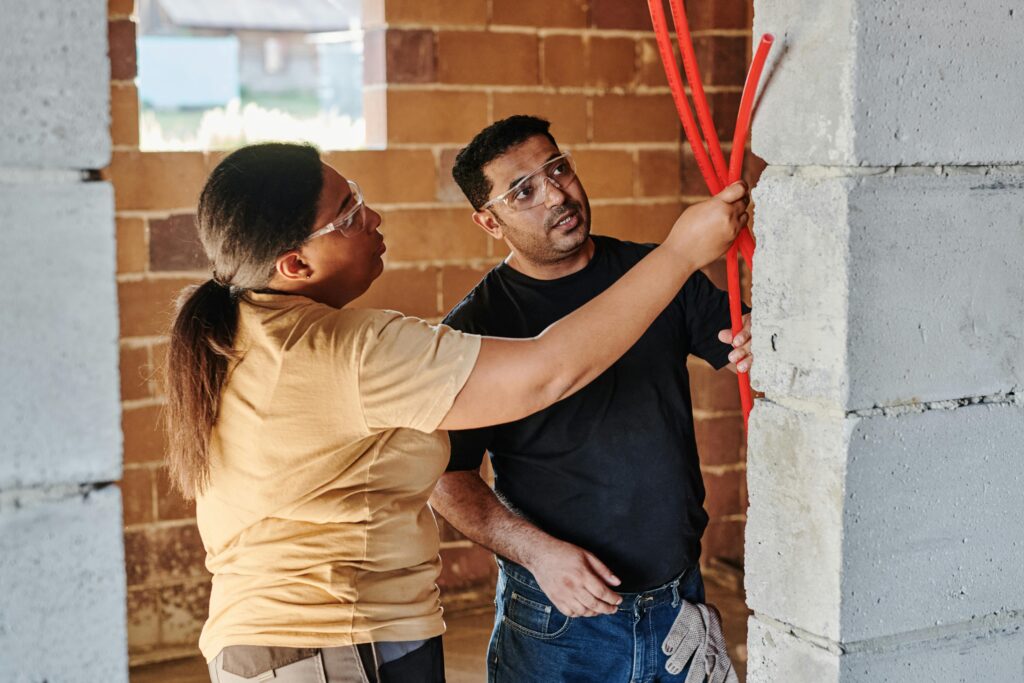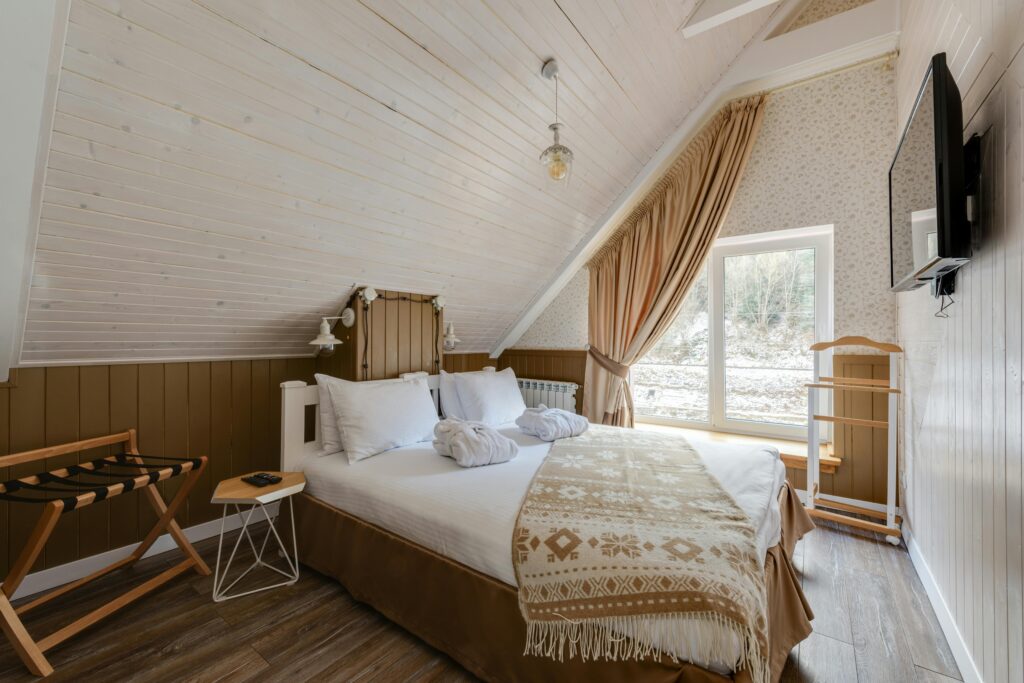Imagine walking into a home where every new room feels like a seamless extension of your lifestyle, a space that not only adds value but also reflects the cutting-edge design preferences of the future. As homeowners increasingly seek to expand their living spaces, understanding the latest trends becomes essential. In this article, we dive headfirst into the exciting world of tendencies 2025 in room addition materials and styles, exploring how innovation, sustainability, and aesthetics are shaping the way we create additional rooms.
Whether you’re planning to build a sunroom, a home office, or an extra bedroom, knowing which materials and design approaches will dominate in 2025 can help you make smarter choices. From eco-friendly composites to minimalist Scandinavian influences, the trends reveal a fascinating blend of practicality and elegance. Throughout this guide, you’ll learn about the most popular materials being used in modern additions, discover styles that are gaining traction, and find inspiration to transform your home extension project into a harmonious blend of function and fashion.
Stay with us as we uncover these emerging trends, providing you with actionable insights to ensure your next room addition is not only stylish but future-proofed for years to come.
Table of Contents
ToggleKey Takeaways
- Embrace Sustainable Materials: Reclaimed wood, eco-friendly composites, and engineered timber lead 2025’s push for green room additions.
- Integrate Smart Technologies: Incorporate smart glass, energy-efficient windows, and automated climate controls for comfort and savings.
- Fuse Design Styles: Blend minimalist, Scandinavian, Japandi, and biophilic elements to create spaces that feel both timeless and fresh.
- Prioritize Energy Efficiency: Choose high-performance insulation panels, solar-ready roofing, and low-VOC finishes to reduce utility costs.
- Opt for Modular & Prefab Solutions: Accelerate build times and maintain flexibility with factory-built panels and modular framing systems.
- Highlight Natural Textures: Pair raw metals, stone accents, and living greenery to reinforce the trend toward organic, tactile interiors.
- Plan for Multi-Functionality: Design additions that adapt—think foldaway walls, Murphy beds, and convertible furniture—to maximize utility in any space.
Why Understanding the 2025 Trends in Room Addition Materials and Styles Is More Important Than You Think
When it comes to expanding your living space, knowing the latest trends in room addition materials and styles can make all the difference. As we approach 2025, homeowners, architects, and builders alike are eager to tap into innovative solutions that not only enhance the functionality of added rooms but also elevate the overall aesthetic appeal of homes. But what exactly are these trends, and why is it crucial to understand them?
Room additions are becoming increasingly popular, with studies showing that nearly 30% of homeowners plan to add extra space to their homes within the next two years. This surge is driven by factors ranging from the rise of remote work to the need for multi-functional spaces. Integrating the right materials and design styles ensures that these additions are not just an afterthought but a seamless part of the home’s architecture.
The materials used in room additions significantly affect durability, energy efficiency, and maintenance costs. For instance, in 2025, sustainable materials such as reclaimed wood, high-performance insulation, and eco-friendly composites are leading the charge. These materials not only reduce the environmental footprint but also help homeowners save on utility bills, an aspect that’s increasingly influential in buyer decisions.
Styles are evolving too. Minimalist designs with clean lines and natural textures have gained traction, reflecting a broader cultural shift towards simplicity and mindfulness. On the other hand, some homeowners are embracing maximalism, combining bold patterns and vibrant colors to create personalized, dynamic spaces. Knowing which styles resonate with current trends enables you to tailor your room addition in ways that boost property value and satisfaction.
Consider the example of the Johnson family from Seattle. They recently added a sunroom to their historic home using sustainable bamboo flooring and large panoramic windows, embracing the biophilic design trend of 2025. Not only did this addition increase their property value by 15%, but it also became their favorite spot to unwind after busy days, proving that thoughtful material and style choices can transform an addition into a treasured space.
In summary, staying informed about the 2025 trends in room addition materials and styles is more important than ever. It empowers you to make smart, sustainable decisions that enhance your home’s comfort, aesthetics, and value. As you consider expanding your space, keep these emerging trends at the forefront to ensure your new room is both modern and timeless.
How to Apply the Trends 2025 in Room Addition Materials and Styles Step by Step
Adding a new room to your home is an exciting project that can significantly enhance your living space and property value. However, to truly benefit from the latest 2025 Trends in Room Addition Materials and Styles, it’s essential to approach the process thoughtfully and strategically. In this guide, we’ll walk you through how to apply these 2025 trends step by step, ensuring your new room is stylish, functional, and aligned with what’s hot in materials and design.
Step 1: Research and Identify the Key 2025 Trends in Room Additions
Before diving into construction, immerse yourself in the Trends in Room Addition Materials and Styles. Look for the emerging patterns in materials , for example, the rising popularity of sustainable, reclaimed wood, natural stone textures, and high-tech composites. In terms of styles, trends favor minimalist design blended with natural elements, biophilic features, and flexible multipurpose spaces.
Tip: Maintain a folder or digital board (like Pinterest) to collect photos, material swatches, and style inspirations reflecting these trends.
Step 2: Define Your Room’s Purpose Aligned with Material and Style Trends
Ask yourself, What function will this added room serve? Whether it’s a home office, guest suite, or entertainment area influences the materials and style choices.
– Home offices can benefit from sound-absorbing wall panels in natural fibers.
– Guest rooms may use calming neutral palettes and sustainable wood flooring.
– Entertainment spaces often incorporate flexible furniture and innovative lighting.
Step 3: Choose Materials with Sustainability and Technology in Mind
2025 trends place heavy emphasis on eco-friendly materials and smart innovations. Here’s what to consider:
– Sustainable wood and bamboo: These are durable and eco-conscious, fitting the trend for natural textures.
– Low-VOC paints and finishes: To maintain indoor air quality.
– Smart glass and energy-efficient windows: Automatically adjust tint and let in natural light.
– Recycled metals and concrete composites: Provide a modern industrial look with an environmental edge.
Example: Integrating reclaimed barn wood accent walls with smart LED lighting can create a cozy yet cutting-edge atmosphere.
Step 4: Incorporate Trending Styles Seamlessly
Styles such as Japandi (Japanese-Scandinavian fusion), biophilic design, and maximalism with curated natural elements are gaining momentum.
– For a Japandi style, emphasize clean lines, muted colors, and handcrafted decor.
– Biophilic design integrates plants, green walls, and natural light to connect occupants with nature.
– Maximalism embraces bold textures but balances it with raw, organic materials.
Use mood boards or 3D room planners to visualize how these styles interact with your chosen materials.
Step 5: Consult Experts to Refine Your Choices
Speak with architects, interior designers, or contractors familiar with Trends in Room Addition Materials and Styles. They can provide practical advice on:
– Local material availability
– Cost implications and durability
– Compliance with building codes
– Integration of smart home technologies
This expert input can save you time and prevent costly mistakes during construction.
Step 6: Develop a Detailed Plan and Budget
Create a comprehensive blueprint and itemized budget reflecting your choices in materials and styles. Consider:
– Material costs (flooring, wall finishes, hardware)
– Labor expenses
– Timeframes for sourcing trendy materials (some eco-friendly products may have longer lead times)
– Contingency funds for unexpected issues
Having a clear roadmap ensures the project proceeds smoothly and adheres to the 2025 trends you want to embody.
Step 7: Execute Construction While Monitoring Trend Compliance
During the building phase:
– Regularly review that materials used match the original Trends in Room Addition Materials and Styles.
– Monitor installation to ensure style details, like minimalism or natural textures, are accurately incorporated.
– Test technological integrations such as smart lighting or energy-efficient windows.
Taking an active role during construction helps maintain the integrity of your modern design vision.
Step 8: Style and Decorate Your New Room to Highlight 2025 Trends
Once construction is complete, add final touches that emphasize the chosen styles. Consider:
– Sustainable furniture made of natural fibers or recycled materials.
– Statement planters or living walls to reinforce biophilic elements.
– Textiles in earth tones for warmth and comfort.
– Minimalist art and multifunctional furnishings for a clean, practical look.
These details complete the transformation and fully actualize the Trends in Room Addition Materials and Styles.
By following these eight steps, you’ll confidently apply the latest 2025 trends in room addition materials and styles. Your new space won’t just expand your home, it will reflect the cutting-edge design philosophies shaping tomorrow’s living environments.

Tips for Staying Ahead with 2025 Trends in Room Addition Materials and Styles:
✅ Opt for Sustainable Materials: Eco-friendly options like bamboo, reclaimed wood, and recycled steel are gaining popularity, combining durability with environmental responsibility.
❌ Avoid Outdated Laminate: Traditional laminates often look cheap and won’t match the sophisticated styles trending in 2025.
💡 Embrace Smart Glass: Incorporate smart glass windows or partitions that adjust opacity for privacy and natural light control.
✅ Go Modular: Prefabricated and modular materials allow faster construction and flexibility in room layout, perfect for modern additions.
❌ Skip Heavy Ornate Details: Minimalism continues to dominate, so steer clear of overly ornate trims and heavy moldings that make rooms feel cramped.
💡 Mix Industrial & Natural Elements: Combine raw metals with soft woods and greenery for a balanced, trendy aesthetic.
✅ Prioritize Thermal Efficiency: Materials with superior insulation properties like structural insulated panels (SIPs) can reduce energy costs and improve comfort.
❌ Don’t Ignore Color Trends: Neutral palettes with accent shades like terracotta, muted blues, or soft greens keep your addition looking fresh and inviting.
💡 Incorporate Multi-Functional Spaces: Design materials and styles that allow rooms to transform, think foldable walls or Murphy beds integrated with sleek cabinetry.
✅ Use Textured Finishes: Matte surfaces, natural textures, and tactile wall treatments add depth and warmth without overwhelming the space.
By integrating these forward-thinking approaches, your 2025 room addition will be stylish, functional, and aligned with cutting-edge design trends.
Key Concepts
When delving into the subject of Tendencies 2025 in Room Addition Materials and Styles, it’s crucial to grasp the foundational ideas that define and shape this evolving landscape. Much like a painter choosing their palette and brushstrokes before bringing a vision to life, understanding these core concepts equips us to appreciate the nuanced shifts happening in home expansions and their architectural narratives.
Evolution of Materials: From Tradition to Innovation
At the heart of room addition trends lies the interplay between time-honored materials and cutting-edge innovations. Traditionally, wood, brick, and concrete were the pillars upon which homes expanded, offering reliability and aesthetic familiarity. However, as 2025 approaches, there’s a palpable shift toward materials that marry sustainability with customization.
Imagine materials as the vocabulary of architectural storytelling. Just as language evolves to express new ideas and emotions, construction materials are transforming to capture values like environmental consciousness and technological integration. Engineered timber, reclaimed materials, and composites imbued with nanotechnology allow homeowners not only to extend physical space but to articulate a commitment to eco-friendly living. This metamorphosis in materials acts as a silent narrator revealing the homeowner’s ethos.
Style Fusion: Blending Eras and Cultures
Styles in room additions are no longer confined to matching the original architecture or strictly adhering to a single design movement. Instead, 2025 heralds an era of fusion, where mid-century modern meets Scandinavian minimalism and Japanese wabi-sabi intertwines with futuristic minimalism.
Think of this fusion as a musical remix, where distinct genres blend to create something fresh yet familiar. It’s about the harmony found in contrast: warm natural textures paired with sleek metal accents, ornate moldings balancing streamlined simplicity, or rustic charm juxtaposed with ultra-modern glass panels. This approach speaks to a deeper narrative of identity and personal expression, where every addition becomes a unique chapter of a home’s evolving story.
Sustainability as a Design Ethos
Beyond aesthetics and structural integrity, sustainability has become the silent protagonist in the tale of room additions. It’s no longer a feature but a fundamental principle, woven into the choice of materials, construction processes, and energy efficiency.
Much like a storyteller choosing a setting that shapes the plot’s mood, architects and homeowners align additions to reduce environmental footprints. Innovative insulation materials, solar-integrated roofing systems, and non-toxic paints contribute layers of ecological mindfulness. This ethical dimension transforms an ordinary room addition into a statement of respect for nature and future generations, rendering the new space not just an extension of the house but an extension of values.
Integration with Existing Structures: The Seamless Narrative
One of the profound challenges, and artistic triumphs, of room additions lies in their integration with existing structures. It is akin to adding a new chapter to a well-loved book without breaking the flow or confusing the storyline.
Materials and styles must converse with the existing architecture, either by harmonizing or deliberately contrasting to create dramatic effect. This dialogue can be subtle, with complementary hues and proportions, or bold, introducing unexpected forms and textures that invite reinterpretation of the whole. This balance between continuity and innovation encapsulates the essence of 2025’s design mindset, respecting the past while embracing the future.
Technology as an Enabler of Style and Material Innovation
Technology increasingly plays the role of a silent partner in shaping trends for 2025 room additions. From 3D printing components to the use of augmented reality in visualizing styles before construction begins, these advancements impact which materials are feasible and which styles are within reach.
Imagine technology as the narrator’s omniscient voice, offering clarity and foresight. It enables more precise customization, minimizes waste, and fosters experimentation that would once have been prohibitively expensive or complex. This synergy between human creativity and technological tools opens a broader spectrum of possibilities, enriching the vocabulary of room addition styles and materials.
Frequently Asked Questions about Trends 2025 in Room Addition Materials and Styles
❓ What are the most popular materials for room additions in 2025?
In 2025, sustainable and eco-friendly materials dominate room addition trends. Bamboo, recycled steel, and reclaimed wood are top choices, combining durability with environmental consciousness. Homeowners are increasingly prioritizing materials that reduce carbon footprints while offering modern aesthetics.
❓ Which architectural styles are trending for room additions in 2025?
Minimalist and Scandinavian-inspired designs lead the way in 2025. Clean lines, neutral color palettes, and large windows that maximize natural light define these styles. Additionally, there’s a growing interest in blending indoor and outdoor spaces through biophilic design elements.
❓ How do new materials impact the cost of room additions?
Although eco-friendly materials can sometimes have a higher upfront cost, their long-term benefits, like energy efficiency and durability, often offset expenses. Many homeowners find that investing in innovative materials reduces maintenance and utility costs over time, making them a smart choice financially.
❓ Are smart home features integrated with room additions in 2025?
Yes, integrating smart home technology is a key trend in 2025. From automated lighting to climate control and security systems, modern room additions often include smart solutions that enhance convenience, safety, and energy efficiency.
❓ Can these trends be adapted for small or budget-friendly room additions?
Absolutely. Trends in 2025 emphasize flexibility and customization. For smaller or budget-conscious projects, choosing minimalist styles and sustainable materials like recycled composites can deliver a modern look without breaking the bank. Additionally, modular designs allow for phased expansions.



2 Responses